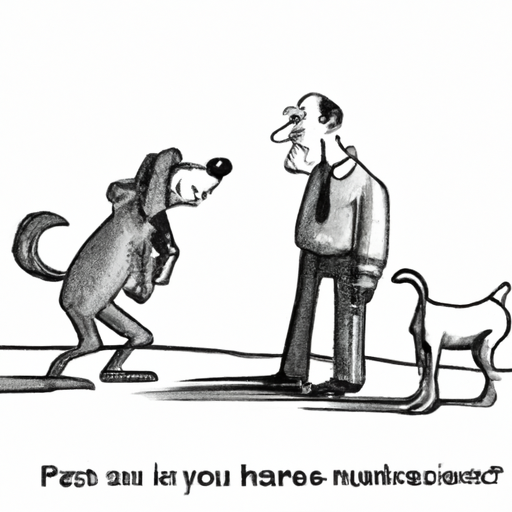As a dog owner, you may have experienced that awkward moment when your canine friend starts sniffing your crotch area. Sure, it’s embarrassing, but it’s also a common behavior among dogs. Understanding why dogs do this might help you manage their actions better and enhance your relationship with your furry family member. This article explores the peculiar behavior in detail.
Key Takeaways:
- Dogs use their sense of smell to gather information about their environment.
- Your crotch area carries a unique scent that dogs find interesting.
- Training can help manage a dog’s sniffing behavior.
Table of Contents:
- Understanding a Dog’s Sense of Smell
- Why Dogs are Interested in the Human Crotch Area
- How to Handle Your Dog’s Sniffing Behavior
- Common Questions About Dogs’ Sniffing Habits
Understanding a Dog’s Sense of Smell
Dogs have an extraordinary sense of smell. They possess up to 300 million olfactory receptors in their noses, compared to about six million in humans. Dogs also have a part of their brain that is dedicated to analyzing smells, which is 40 times greater than ours. This amazing sense of smell profoundly influences their behavior and interaction with their environment, including you.
Why Dogs are Interested in the Human Crotch Area
There are several reasons why your dog might be attracted to your crotch area.
-
Scents and Pheromones: Your body emits different scents, especially in areas covered by clothing, like the crotch. Dogs can detect these scents easily and may be attracted to them. Humans also produce pheromones, which are chemical signals that can impact dog behavior. These pheromones are concentrated in the crotch and armpit area. A dog’s interest in these regions might be due to the unique composition of your personal scent and pheromones.
-
Curiosity: Dogs are inherently curious creatures. If they sense something different or unfamiliar about you, they might investigate further by sniffing.
-
Social Behavior: Dogs sniff each other’s rear ends as a way of greeting and gathering information. They may be extending the same social etiquette to humans, albeit in a more embarrassing way.
If you’re interested in learning more about dogs’ sense of smell and their behavior, this article provides a comprehensive overview.
How to Handle Your Dog’s Sniffing Behavior
While this behavior is normal for dogs, it might not be appropriate, especially when you have guests. Here are some ways to manage your dog’s sniffing behavior:
-
Training: Train your dog to understand and follow commands such as ‘stop’, ‘sit’, or ‘stay’. This can help control their behavior in any situation.
-
Distraction: Keep your dog’s favorite toy or treats handy. These can distract them when they start sniffing inappropriately.
-
Socialization: Expose your dog to different people and environments. This will help them get used to various smells and reduce their curiosity.
For more tips on how to train your dog, check out this guide from the American Kennel Club.
Common Questions About Dogs’ Sniffing Habits
Why does my dog sniff other dogs?
Dogs sniff each other as a form of communication. They can learn a lot about each other this way, including their sex, diet, and emotional state.
Is it normal for my dog to sniff everything?
Yes, dogs use their sense of smell to understand their environment, which often involves sniffing a lot.
Can I train my dog not to sniff people?
Yes, with consistent training, you can teach your dog to avoid sniffing people.
For more answers to your dog-related questions, you can visit OneTopDog. The site offers a wealth of information on dog behaviors, including why dogs bark at night, how to stop a dog from chewing, and tips for potty training your puppy.
Remember, understanding and patience are key when dealing with a dog’s sniffing behavior. If your dog’s actions become a concern, it’s best to consult with a professional dog trainer or a veterinarian. They can provide guidance based on your dog’s specific needs and behaviors.



